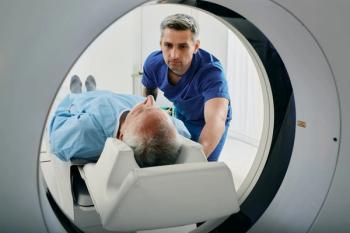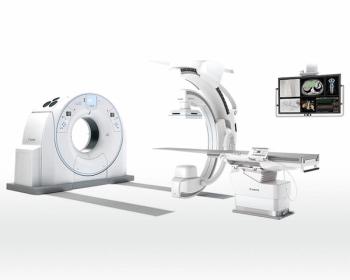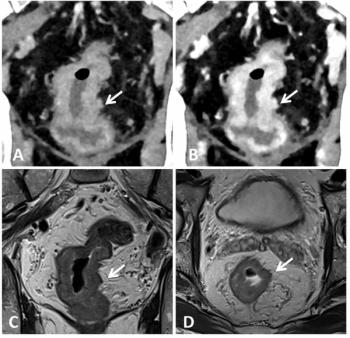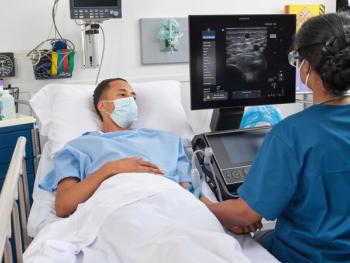
Advantages of wide CT detectors outweigh disadvantages
The new generation of wide CT detectors provides expanded coverage, allowing faster scans and even dynamic imaging of organs, including heart and brain. There are disadvantages, said Dr. Mathias Prokop, speaking May 19 at the 11th International Symposium on Multidetector Row CT, but these are minor in comparison.
The new generation of wide CT detectors provides expanded coverage, allowing faster scans and even dynamic imaging of organs, including heart and brain. There are disadvantages, said Dr. Mathias Prokop, speaking May 19 at the 11th International Symposium on Multidetector Row CT, but these are minor in comparison.
Most in the CT community are enamored by the extended coverage per rotation that wide detectors offer, decreasing scan time and eliminating the need otherwise to do multiple acquisitions. Whereas the one-time state-of-the-art 4cm coverage takes four steps to cover the heart, detectors spanning 8 cm require just two. Toshiba’s 16 cm-wide, 320-channel detector captures the heart in one.
Fewer steps mean less if any motion artifacts. Faster acquisitions eliminate respiration and lessen the chance of errant heart beats, said Prokop, chairman of radiology at the University medical Center in Utrecht, The Netherlands. Flash scanning freezes the motion of pediatric and trauma patients, who have trouble keeping still. Less contrast material is needed because of the wider coverage. And perfusion studies are more accurate. Dynamic imaging not only of the heart but the brain, kidney and other organs are possible.
Wider coverage per rotation, however, threatens to increase patient radiation exposure. Acquisition runs begin before and continue after the area being scanned. Vendors have already solved this problem, called over-ranging, by using collimator that block x-rays not directed at specific regions of interest.
Not yet resolved, however, are limitations in geometric efficiency, Prokop said. The conebeam reconstruction that accompanies wide detectors requires a relatively small field of view in the z-axis and consequent low dose efficiency.
Newsletter
Stay at the forefront of radiology with the Diagnostic Imaging newsletter, delivering the latest news, clinical insights, and imaging advancements for today’s radiologists.



























